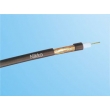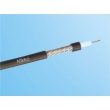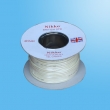Network cable is used to connect and transfer data between computers and a network. There are different types of network cable, and the appropriate type to use will depend on the structure and topology of your network. The most commonly used types of network cable are the twisted pair, coaxial, Ethernet cross over, and fiber optic.
The unshielded twisted pair (UTP) cable is used in many Ethernet networks. It has four pairs of wires that are housed inside of the lining of the cable. Each pair is twisted into several additional twists to prevent interference from other devices on the network. The structure of this type of cable increases its reliability and helps minimize network failures.
Coaxial cable, or coax, is another common type of network cable. It has a copper conductor in its center and a plastic coating serves as an insulator between the center conductor and a metal shield. The cable is then covered with a coating. The coating may be think or thick — the thicker coating which less pliable provides extra protection.
Ethernet crossover cable is used to connect a computer network made up of two or more computers. This type of network cable eliminates the need for network switches or routers. The cable also allows the computers to be connected using their network adaptors, such as the network interface card (NIC).
Fiber optic network cables are used for networks that span large distances. As a result, this type of cabling has several layers of protective coating. It also transmits light as opposed to electrical signals like other cables. This makes it an ideal cable for network environments that are exposed to large amounts of electrical interference. It also transmits information at high speeds and is therefore used in large network environments like those used by big businesses.
As wireless networks become more and more popular, network cable is becoming less necessary. Still, many systems, especially large scale systems, continue to rely on network cables.







